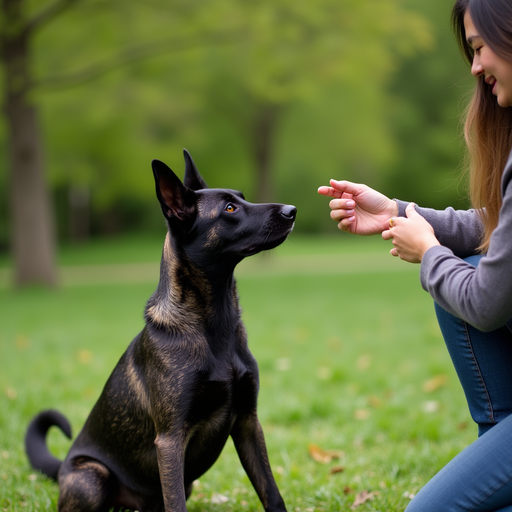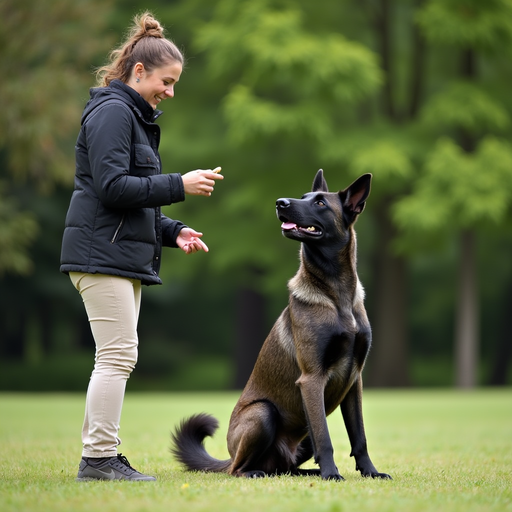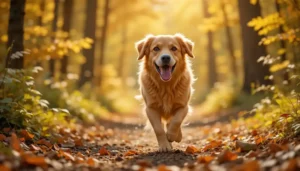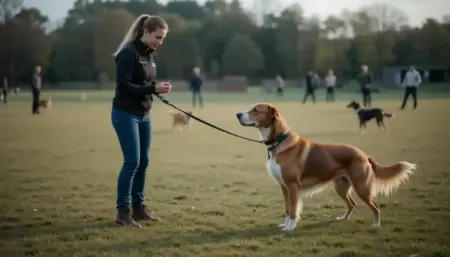Formosan Mountain Dog Training is a focused, reward‑based method that teaches this energetic, intelligent breed basic manners, reliable recall, and advanced skills while honoring its strong work drive.
By understanding the breed’s heritage, using consistent cues, and applying positive reinforcement, owners can turn a spirited Formosan into a well‑behaved companion who thrives on mental challenges.
This guide walks you through every stage—health checks, socialization, obedience, problem‑solving, and beyond—so you can enjoy confident, stress‑free outings with your dog.
Understanding the Formosan Mountain Dog
The Formosan Mountain Dog (FMD) is Taiwan’s native landrace, descended from ancient hunting dogs that guarded villages and herded livestock.
- Temperament: Loyal, alert, and highly independent.
- Energy level: Very high; they need both physical exercise and mental puzzles.
- Intelligence: Ranked among the smartest breeds, quick to learn but also quick to test limits.
Due to these traits, Formosan Mountain Dog Training requires a clear structure, ample enrichment, and an owner who can remain calm and consistent.
Key characteristics that affect training
| Trait | How it influences training |
|---|---|
| Strong prey drive | Distractions from small animals are common; recall must be solid. |
| Guarding instinct | May be wary of strangers; early socialization is essential. |
| Independent streak | Requires motivation—use high‑value rewards rather than force. |
| Sensitivity to tone | Harsh corrections can cause anxiety; keep voice upbeat. |

Core Principles of Formosan Mountain Dog Training
Before diving into specific commands, mastering these foundational ideas will make every lesson smoother.
- Consistency is king – Use the same cue word, hand signal, and reward each time.
- Positive reinforcement – Reward desired behavior instantly with treats, praise, or play.
- Short, frequent sessions – 5‑10 minutes, 2‑3 times daily, keep the dog focused.
- Clear end of a session – A marker word, such as “done,” signals to the dog that training is over, preventing frustration.
Implementing these principles creates a learning environment where the Formosan feels safe and motivated, setting the stage for successful Formosan Mountain Dog Training.
Preparing for Training: Health Checks and Gear
A healthy body is the foundation of effective training.
Health checklist before the first session
- Vaccinations up‑to‑date – especially core vaccines (distemper, parvovirus, adenovirus).
- Parasite control – monthly heartworm and flea/tick preventatives.
- Joint health – consider glucosamine for breeds prone to hip dysplasia.
- Dental care – clean teeth weekly; sore gums can affect treatment acceptance.
Essential gear for a productive training day
| Item | Why you need it | Recommended option |
|---|---|---|
| Flat‑fit harness | Prevents neck injury and gives better control on pulls | Ruffwear Front Range Harness |
| Collapsible water bowl | Keeps the dog hydrated during longer sessions | Lixit Travel Bowl |
| Treat pouch | Hands‑free delivery of high‑value rewards | K9 Tactical Treat Bag |
| Clicker (optional) | Marks the exact moment of desired behavior | PetSafe Classic Clicker |
| Leash (4–6 ft) | Provides room to move while maintaining control | Mighty Mo 5‑ft Training Leash |
Having this kit ready eliminates interruptions, allowing you to focus on the lesson rather than hunting for supplies.
Socialization: The First Step in Formosan Mountain Dog Training
Socialization is the bridge between a protective guardian and a well‑adjusted companion.
When to start
- Puppy stage (8‑16 weeks) – Critical window for accepting new sights, sounds, and smells.
- Adult dogs – Can still socialize, but progress may be slower; use gradual exposure.
A step‑by‑step socialization plan
- Controlled introductions – Meet one calm dog at a time on neutral ground.
- Sound desensitization – Play recordings of traffic, thunderstorms, and crowds at low volume, rewarding calm behavior.
- People variety – Invite children, seniors, and individuals wearing hats or sunglasses to interact gently.
- Environment rotation – Walk on grass, pavement, sand, and mulch to build confidence on different surfaces.
Tips for success
- Keep sessions under 10 minutes to avoid overwhelm.
- Use high‑value treats to associate new experiences with positive outcomes.
- End each encounter with a favorite game or toy, reinforcing a happy finish.
Early socialization dramatically lowers the chance of fear‑based aggression, making later Formosan Mountain Dog Training smoother and safer.

Basic Obedience Commands for Formosan Mountain Dog Training
A solid obedience foundation gives you reliable control in everyday life.
“Sit”
- Hold a treat close to the dog’s nose.
- Move your hand upward; the dog’s head follows, causing the rear to drop.
- As soon as the hips touch the floor, say “Sit,” click, and reward.
“Stay”
- Ask for “Sit” first.
- Open your palm toward the dog and say “Stay.”
- Take a step back, then return and reward if the dog remains seated.
- Gradually increase distance and duration.
“Come” (Recall)
- Begin in a low‑distraction area.
- Call the dog’s name followed by “Come!” in an upbeat tone.
- When the dog reaches you, click and give a high‑value treat.
- Practice on a long leash before moving to off‑leash recall.
4. “Down”
- From a sitting position, lower a treat to the floor, then slowly slide it away.
- The dog follows, lying down.
- Mark “Down,” click, and reward.
“Leave It”
- Place a treat in one hand, close the fist, and say “Leave it.”
- Wait until the dog stops trying to get the treat, then reward from the other hand.
Tip: Keep each session focused on one command; overload can confuse, especially with this intelligent breed.
Leash Walking and Recall: Real‑World Applications
A Formosan’s high energy makes leash training a must‑have skill for safe outings.
Loose‑Leash Walking
- Choose a front‑clip harness – It redirects pulling toward your side.
- Start inside – Walk in a hallway, rewarding every 1–2 steps of slack.
- Implement the “Stop‑and‑Go” method – When the leash tightens, stop moving; resume only when slack returns.
- Add a cue – Say “Easy” or “Heel” as soon as the leash is loose, then reward.
Reliable Recall on the Move
- Use a long‑line (15‑30 ft) to give the dog space while you maintain control.
- Practice “Come” with increasing distractions – Start in a quiet yard, then move to a park.
- High‑value rewards – Use a special treat (e.g., freeze‑d chicken bites) that the dog only receives on recall.
- Emergency recall cue – Choose a distinct word like “Now!” and train it with a super‑high reward until the response is instantaneous.
Consistent leash and recall training turns a high‑spirited Formosan into a well‑behaved partner for walks, hikes, and urban adventures.
Handling Common Behavioral Challenges
Even with solid foundations, Formosan Mountain Dogs may develop specific problem behaviors.
Excessive Barking
- Identify the trigger – Visitors, other dogs, or boredom.
- Teach “Quiet” – When the dog barks, say “Quiet,” wait for a pause, then reward.
- Increase mental stimulation – Puzzle toys and training games reduce vocalization.
Digging
- Provide a designated digging zone – A sandbox where the dog can safely dig.
- Redirect energy – Use fetch or tug games when you catch the dog digging elsewhere.
- Check for boredom – If the dog is under‑exercised, add longer walks or agility drills.
Jumping on People
- Ignore the jump – Turn away and wait for four‑legged calm.
- Reward all four paws on the floor – Use “Sit” or “Stay” as an alternative greeting.
- Teach a “Sit‑to‑Greet” routine – Only give attention when the dog is seated.
Resource Guarding
- Desensitize by offering treats near the guarded item – Gradually reduce the distance.
- Teach “Give” or “Drop it” – Trade the guarded object for a higher‑value reward.
- Never punish – It can increase anxiety and aggression.
Addressing these challenges early prevents escalation and keeps training on track.

Advanced Training Techniques and Tricks
When basic obedience is solid, you can explore more complex skills that satisfy the Formosan’s need for purpose.
“Search” Game (Scent Work)
- Hide a scented object (e.g., a sock with your scent) in a room.
- Command “Find it!” and let the dog use its nose.
- Reward heavily when the object is located.
Agility Basics
- Set up low hurdles, tunnels, and weave poles in your backyard.
- Use “Through,” “Over,” and “Weave” cues.
- Keep sessions short and celebrate each successful run.
“Touch” Target Training
- Teach the dog to touch a hand or a target stick with its nose.
- Useful for directing the dog during “Stay” or “Come” from a distance.
“Place” Command
- Designate a mat or bed as the dog’s “Place.”
- Cue “Place,” guide the dog onto the mat, then reward calmness.
- Gradually increase duration and add “Stay” while you move away.
Advanced tricks not only impress friends but also deepen the mental bond between you and your Formosan, reinforcing the principles of Formosan Mountain Dog Training.
Using Positive Reinforcement & Clicker Training
Positive reinforcement is the backbone of modern dog training, and clicker training adds precision.
How clicker training works
- Load the clicker – Pair the click sound with a treat (≈5 repetitions).
- Mark the exact behavior – When the dog performs the desired action, click instantly.
- Reward – Follow the click with a treat.
Benefits for Formosan Mountain Dogs
- Clear communication – The click precisely marks the behavior, reducing confusion.
- Fast learning – High‑value reward after a click speeds up acquisition.
- Low stress – No harsh corrections; the dog focuses on earning rewards.
Sample clicker lesson: “Sit”
- Prompt the dog to sit with a treat‑guided hand motion.
- As soon as the rear touches the floor, click, then give a treat.
- Repeat 5‑7 times, then fade the treat as the dog learns the cue.
If you prefer not to use a clicker, a consistent word like “Yes!” works equally well—just ensure you reward immediately.
Training Schedule and Progress Tracking
A structured plan keeps you and your dog on the same page and measures growth.
Weekly training template
| Day | Session Focus | Duration | Reward Type |
|---|---|---|---|
| Monday | Sit + Stay | 10 min | Small treats |
| Tuesday | Leash walking (Loose‑Leash) | 15 min | Verbal praise + play |
| Wednesday | Recall “Come” (Long‑line) | 10 min | High‑value treats |
| Thursday | “Leave it” & “Drop it” | 10 min | Food puzzle |
| Friday | New trick (Touch/Target) | 10 min | Toy reward |
| Saturday | Social walk + agility basics | 30 min | Mixed treats + fetch |
| Sunday | Rest + mental enrichment (chew toy) | — | — |
Tracking progress
- Logbook – Note date, command practiced, number of successful repetitions, and any setbacks.
- Video clips – Record short videos to review body language and timing.
- Scorecard – Rate each command on a 1‑5 scale weekly; aim for at least a 4 before moving to the next level.
Using a schedule and tracking tool turns Formosan Mountain Dog Training into a measurable project, helping you spot patterns and celebrate milestones.
Nutrition and Exercise to Support Training Success
Training demands both mental stamina and physical endurance; diet and activity must complement each other.
Optimal diet for an active Formosan
- Protein: 25–30 % of calories from high‑quality animal sources (chicken, fish, beef).
- Fat: 12–15 % for energy; include omega‑3 fatty acids for joint health.
- Carbohydrates: Moderate; choose low‑glycemic grains or legumes.
- Supplements: Glucosamine/chondroitin for joint support, especially if you do regular agility work.
Exercise routine
| Activity | Frequency | Duration | Purpose |
|---|---|---|---|
| Play fetch/tug | Daily | 30–45 min | Cardiovascular health |
| Prevent boredom, stimulate the brain | 3–4 × week | 15 min | Burn excess energy |
| Agility or hiking | 1–2 × week | 30 min | Build strength, confidence |
| Mental games (puzzle toys, scent work) | Daily | 10 min | Prevent boredom, stimulate brain |
A well‑balanced diet paired with varied exercise reduces hyperactivity and enhances focus during training sessions, making each lesson more productive.
Troubleshooting Stalled Progress
Even the best‑trained dog can hit a plateau.
Common causes and fixes
- Inconsistent cues – Re‑establish the exact word/hand signal, and involve all family members in using the same cue.
- Over‑training – Reduce session length, give the dog a break, then resume with fresh enthusiasm.
- Insufficient reward value – Upgrade to a higher‑value treat for the specific command that’s slipping.
- Health issues – Pain or illness can affect performance; schedule a veterinary check‑up if you notice sudden regression.
- Environmental distractions – Gradually increase difficulty by adding background noise or other dogs, rewarding calm behavior each step.
By diagnosing the root of a slowdown and adjusting your approach, you’ll get the training momentum back and keep your Formosan thriving.
Resources and Communities for Ongoing Support
Continuing education helps you stay motivated and discover new techniques.
- Online Forums: Formosan Mountain Dog Club of America (Facebook), Reddit r/FormosanDog.
- Professional Trainers: Look for certified trainers who list “positive reinforcement” and “breed‑specific experience.”
- Workshops & Events: Local dog sport clubs often host obedience & agility clinics—great for socializing and skill‑building.
Engaging with these resources ensures your Formosan Mountain Dog Training stays current, effective, and enjoyable.
FAQs
What is the best age to start Formosan Mountain Dog Training?
The ideal window is 8–16 weeks for puppies, when the brain is most receptive to socialization and basic commands. Adult dogs can still learn, but sessions may need to be slower and more patient.
How much daily exercise does a Formosan need to stay trainable?
Aim for at least 45 minutes to an hour of moderate‑to‑high intensity activity (walks, fetch, scent work). Without enough outlets, the breed can become restless and less focused during training.
Can I use clicker training with a Formosan Mountain Dog?
Absolutely—clicker training provides a clear marker that this quick‑learning breed responds to well. Pair the click with a high‑value treat and you’ll see fast progress on commands like “Sit” or “Leave it.”
What are common behavior problems, and how do I fix them?
Typical issues include excessive barking, digging, and jumping on people. Use positive reinforcement to teach “Quiet,” provide a designated digging area, and reward calm greetings with a “Sit‑to‑Greet” routine. Consistency is key.
Do Formosan Mountain Dogs need socialization with other dogs?
Yes. Early and ongoing socialization helps mitigate guard‑instinct aggression. Introduce your dog to well‑behaved, calm dogs in controlled settings, gradually increasing exposure to parks or dog classes.
Conclusion
Mastering Formosan Mountain Dog Training hinges on understanding the breed’s high energy, intelligence, and strong work drive, then pairing that knowledge with consistent, positive‑reinforcement methods.
Begin with health checks and proper gear, socialize early, and lay a solid obedience foundation using short, rewarding sessions.
Advance to leash walking, reliable recall, and fun tricks that keep the mind engaged, while tailoring nutrition and exercise to fuel performance.
Track progress with a weekly schedule, troubleshoot setbacks quickly, and lean on reputable resources and community support.
With patience and a structured plan, you’ll transform a spirited Formosan into a well‑behaved, happy companion ready for any adventure—starting today.









